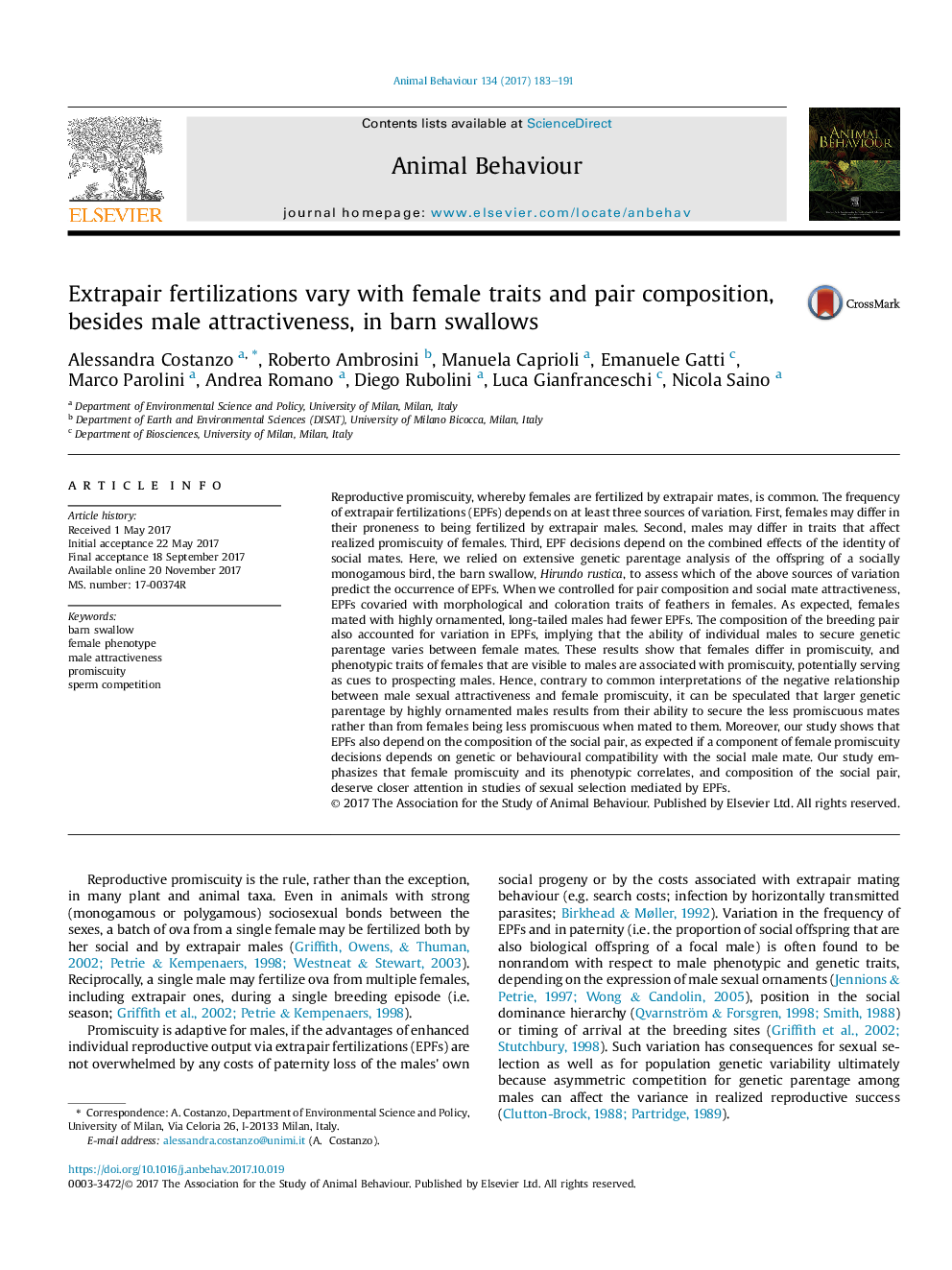ترجمه فارسی عنوان مقاله
کود نشیمنگاه با ویژگی های زنانه و ترکیب جفت، در کنار جذابیت مردانه، در بلعیدان انبار متفاوت است
عنوان انگلیسی
Extrapair fertilizations vary with female traits and pair composition, besides male attractiveness, in barn swallows
| کد مقاله | سال انتشار | تعداد صفحات مقاله انگلیسی |
|---|---|---|
| 130399 | 2017 | 9 صفحه PDF |
منبع

Publisher : Elsevier - Science Direct (الزویر - ساینس دایرکت)
Journal : Animal Behaviour, Volume 134, December 2017, Pages 183-191
ترجمه کلمات کلیدی
پرستار انبار، زن فنوتیپ، جذابیت مردانه، غافلگیر کننده، رقابت اسپرم،
کلمات کلیدی انگلیسی
barn swallow; female phenotype; male attractiveness; promiscuity; sperm competition;

